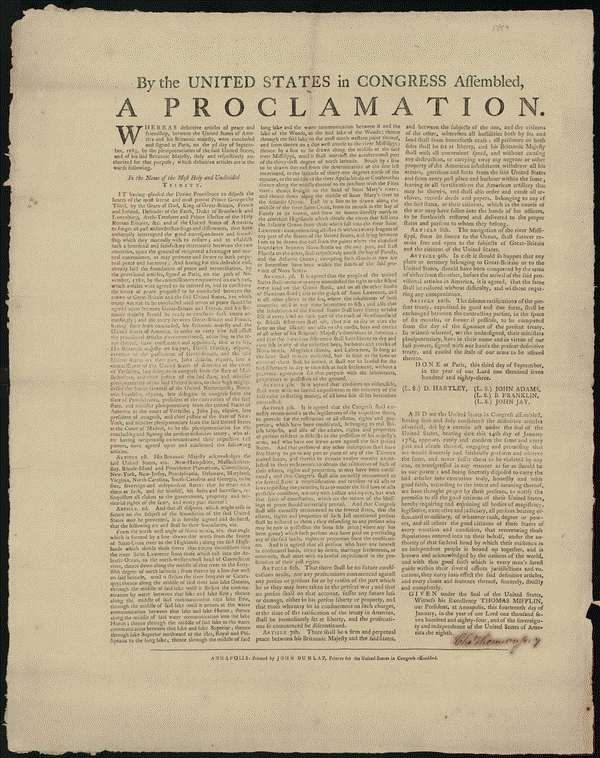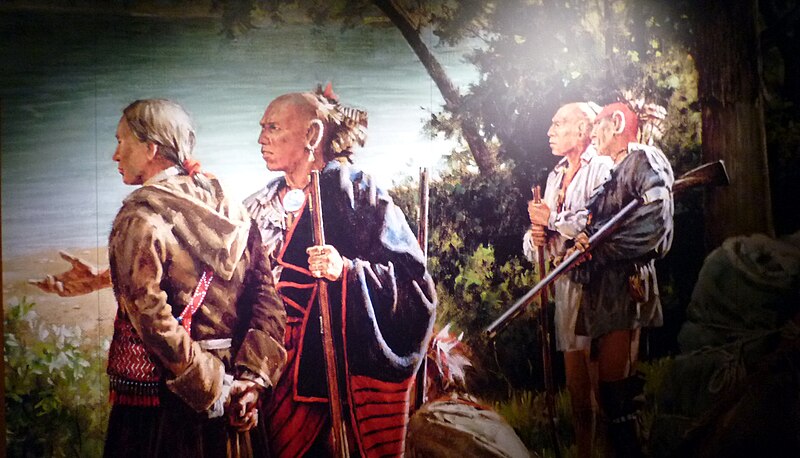15 Historical Facts about the French and Indian War
Step with us into the annals of history and uncover the intricacies of the French and Indian War with our enthralling compilation of 15 captivating historical facts. This monumental conflict, spanning from 1754 to 1763, holds the key to understanding the power struggles that unfolded in North America. Immerse yourself in a journey as we unravel the threads connecting the French, British, and Native American forces in a battle for supremacy over vast territories. Delve into the depths of this pivotal moment, where geopolitical forces collided, alliances were forged, and the course of a continent was forever altered. From the early sparks of tension to the grand battles that shaped the outcome, we shed light on the key players, lesser-known anecdotes, and crucial turning points that defined the conflict. Read on to learn more from this voyage through the pages of history, breathing life into a forgotten era.
1. The French and Indian War was a Territorial War

Hoodinski, CC BY-SA 3.0, via Wikimedia Commons
The French and Indian War is the Seven Years’ War. It was a North American territorial conflict between the French and British colonies. This conflict arose due to the desire of both powers to assert dominance over the Ohio River Valley. It was a geographically significant region with abundant resources. The French and British forces fought for the strategic importance of this valley. The tensions escalated to the point where armed conflict became inevitable. The clash of interests ignited the flames of war, marking a pivotal moment in North American history. Native American tribes allied with the French hence the term “French and Indian War” refers to the involvement of various. It was NOT a conflict between France and India.
2. This War was a Defining Moment for George Washington
The life of George Washington took a crucial turning point during the French and Indian War. Washington found himself thrust into the midst of this conflict. He acquired important military experience that would shape his future initiative capacities. He was promoted to the rank of lieutenant colonel, which entails a lot of responsibility. The Battle of Fort Necessity was one of Washington’s most memorable wartime experiences. In the end, the war ended with a devastating defeat. This occasion filled in as an illustration for Washington, featuring the significance of key preparation and readiness in fighting. Additionally, it taught him about the harsh realities and difficulties of military command. The acquired skills would come in handy. During the American Revolution and later as the nation’s first president, he faced even more obstacles.
Read Also: Top 10 Facts about George Washington
3. Native Americans were Involved in All Aspects of the French and Indian War

Conference Between the French and Indian Leaders Around a Ceremonial Fire by Vernier. Émile Louis Vernier, Public domain, via Wikimedia Commons
The French and Indian War witnessed significant involvement from various Native American tribes. Each group strategically aligned themselves with either the French or the British. The motivations behind these alliances varied among the tribes. Some were motivated by the desire to safeguard their autonomy or impede British territorial expansion. Huron, Abenaki, and Shawnee tribes needed the French to protect their land and sovereignty. Their knowledge of the local terrain, guerrilla warfare tactics, and familiarity with the wilderness provided a significant advantage to their respective allies. Native Americans often served as scouts, guides, and skilled warriors. They also offered vital intelligence and strategic assistance to their European partners. The alliances formed by Native American tribes during the French and Indian War exemplified their astute political maneuvering. The overriding need was to protect their interests amidst the competing colonial powers.
10 Interesting Facts About Native American.
4. The Battle of Quebec Expanded British Influence

The Defeat of the French Fireships. A copy by an unknown artist of a 1767 painting by Dominic Serres (1722-1793), Public domain, via Wikimedia Commons
British General James Wolfe led an assault on the French-controlled heavily fortified city of Quebec. He displayed exceptional leadership and strategic acumen. The battle was fought in the face of formidable obstacles, such as treacherous terrain and formidable defenses that appeared to be nearly invulnerable. However, Wolfe’s forces prevailed over all odds in the end. The conflict’s course would be altered by the decisive victory.
The result of the fight got English command over Quebec and furthermore prepared for their ensuing strength in North America. This pivotal moment laid the groundwork for British colonization and influence expansion. It had a significant impact on the continent’s history. We are constantly reminded of the crucial events that took place during this time of intense conflict and territorial rivalries through the legacy of the Battle of Quebec.
5. The Treaty of Paris Ended the French and Indian War
A significant turning point in North American history occurred with the signing of the Treaty of Paris in 1763. It stopped the French and Indian Conflict. The continent’s future was shaped by this historic deal between France and Britain. The British received France’s North American territories in writing. Thus effectively ending their colonial presence in mainland North America. The Treaty of Paris not only redrew the territorial boundaries but also solidified British control over the region. The British Empire now held a dominant position, with its vast colonial holdings expanding further. Canada and several French-held islands in the Caribbean changed hands. A new era of British colonial rule in North America was ushered in.
Interesting Read: Top 10 Sensational Facts About the Colonial Settlement in the 1600s to 1763.
6. Impact on Native American Tribes
The French and Indian War exerted a significant and lasting influence on the Native Americans. The British victory in the conflict resulted in the transfer of French territories to British control. Consequently, the power dynamics among Native American tribes and the British government underwent a fundamental change. They triggered disruptions in trade networks and alliances that had been established over generations. The Native American tribes found themselves negotiating and interacting with the British authorities with the French no longer in control. The French and Indian War had far-reaching consequences for the Native American tribes. Their economies and social structures were affected by the disruption of trade networks and alliances. The imposition of British policies challenged their autonomy and threatened their traditional territories.
20 Famous Native Americans We Should All Know About.
7. The Proclamation of 1763 was Double Edged

Staff of the US Library of Congress. Original document by Congress 1784, Public domain, via Wikimedia Commons
To address the growing tensions with Native American tribes the British government implemented the Proclamation of 1763. This pivotal proclamation entailed the establishment of a demarcation line running along the majestic Appalachian Mountains. This effectively forbade British colonists from venturing westward beyond this line. The primary objective was to mitigate potential clashes and hostilities between the colonists and Native American communities. The tensions had become increasingly frequent and detrimental. This proved to be a double-edged sword decision.
It not only achieved its desired purpose but also instigated a profound sense of discontent among many colonists. Most British perceived the proclamation as an encroachment on their expansionist ambitions. They viewed it as an unfair restriction imposed by the British government and protested. Consequently, this proclamation strained relations between the British government and the disillusioned colonists and became a catalyst for heightened tensions.
8. The Cost of the War was Substantial
For both France and Britain, the war was a costly endeavor. The British government soaked up a substantial amount of debt. This was because they financed the conflict. To alleviate their financial strain the British authorities implemented a series of taxes on the American colonies. The Stamp Act is the most infamous. Enacted in 1765. Various paper goods, such as legal documents, newspapers, and playing cards were taxed. This taxation measure served as a symbol of British authority over the colonies. The Stamp Act exacerbated the growing tensions between the American colonies and the British Empire. This eventually contributed to the larger grievances that would lead to the American Revolution.
9. The French and Indian War Influenced the American Revolutionary War

Howard Pyle, Public domain, via Wikimedia Commons
The French and Indian War was a catalyst for the American Revolutionary War. This significant war left a lasting impact on the American colonists. The colonists developed a shared experience that fostered a sense of unity and identity among them fighting alongside the British soldiers and officers. The realities of warfare shed light on the oppressive nature of the British government. The stage for the eventual push for independence was set off by the mounting grievances against British rule. The French and Indian War thus was a preparatory ground for the
Top 10 facts About the American Revolution.
10. There were Cultural Exchange and Warfare Techniques

Photojunkie, Public domain, via Wikimedia Commons
This conflict provided a unique opportunity for both sides to mutually learn warfare techniques. The result was a remarkable fusion of military strategies. During the war, European forces witnessed the effectiveness of Native American guerrilla tactics. Which emphasized mobility, stealth, and ambushes. These tactics allowed the Native American tribes to effectively navigate the dense forests and unpredictable terrains. Giving them a distinct advantage over their adversaries. European commanders began incorporating these guerrilla tactics into their own military strategies as a result, realizing their value in combating the region’s unconventional warfare. Native American tribes received European military tactics and firearms in exchange, which significantly altered the dynamics of their conflicts.
11. Native Americans were Ravaged by New Diseases
The French and Indian War witnessed the impact of diseases that afflicted both European soldiers and Native American tribes. Diseases that had been prevalent in Europe for a long time were accidentally transmitted as a result of the collision of the two worlds. Native American populations, on the other hand, lacked any immunity at all to these new pathogens. They were infected with deadly European diseases, resulting in staggering death tolls and irreversible demographic shifts. Native American tribes were devastated by the highly contagious and frequently fatal disease known as smallpox. It destroyed their populaces and left survivors crushed. The devastation caused by measles was made even more dire by the disease. The disease had an effect beyond the Native American communities alone.
Interesting Read:Top 10 Famous Facts About the Battle of the Bighorn of 1876.
12. The Conflict had a Global Impact
The French and Indian War entangled European nations in military conflicts and diplomatic alliances across continents on a global scale. This war was a crucial phase in the competition between European empires for global dominance. It had an impact on many parts of the world. To shield their positions, fortify their presence, and protect their inclinations, European powers activated their soldiers and maritime armadas. Forging alliances with other nations and indigenous peoples through the use of political and economic incentives was frequently the responsibility of international diplomats. These alliances affected the dynamics of European colonial rivalries worldwide and extended beyond the North American theater.
13. The Impact of the French and Indian War on Canada

Francis Hayman, Public domain, via Wikimedia Commons
The British won the war. French territories were their spoils of war. Thereafter, modern Canada was shaped by the influx of British settlers. The British government established a structured governance system. There was a cultural and linguistic dynamic shift after the British took control. in Canada English became a dominant language. French-speaking communities in Canada managed to preserve their language and cultural heritage. Canada’s bilingual character is an enduring effect of the French and Indian War. Canadian identity is also defined by this unique linguistic and cultural blend. Bilingualism is a testament to the historical events that shaped the nation.
10 Most Famous Historical Events that Happened in Canada.
14. The Unsung Role of Women in the War

The Reenactment of the French and Indian War. Rmhermen, CC BY-SA 3.0, via Wikimedia Commons
Women played significant and indispensable roles throughout the duration of the French and Indian War. Unfortunately, historical narratives often overlook their contributions. They supported soldiers on the front lines. These brave women ensured that the troops received the care and sustenance they desperately needed. They took on various responsibilities, serving as nurses, cooks, and laundresses. In addition to these essential roles, some women went above and beyond societal expectations. They disguised themselves as men and actively participated in the conflict. Their dedication and sacrifice exemplify the unwavering spirit of these remarkable individuals.
15. The Outcome of the War Led to British Military Reforms
The French and Indian War exposed vulnerabilities within the British military apparatus. Acknowledging the urgency for military reform, the British government took decisive action. They made changes that helped them win the American Revolutionary War and other wars. In the years that followed, British military strategies and tactics were significantly influenced by the French and Indian War. The English military embraced extensive changes pointed toward tending to their shortcomings and supporting their capacities. These reforms included recruitment, training, logistics, and command structure. The British military professionalized, enhancing discipline, efficiency, and coordination among their ranks. The British adopted unconventional warfare tactics employed by their adversaries. The conflict demonstrated the effectiveness of guerilla warfare.
The French and Indian War was a major conflict that changed history. You will acquire a comprehensive comprehension of this significant event through our investigation of these historical details. This conflict had far-reaching consequences from the beginning when it was characterized by territorial disputes and rival alliances, to the involvement of key figures like George Washington. Britain became a dominant colonial power in North America. It started future tensions between the British Empire and its American colonies. The flame of the American Revolution was ignited by it.
Planning a trip to Paris ? Get ready !
These are Amazon’s best-selling travel products that you may need for coming to Paris.
Bookstore
- The best travel book : Rick Steves – Paris 2023 – Learn more here
- Fodor’s Paris 2024 – Learn more here
Travel Gear
- Venture Pal Lightweight Backpack – Learn more here
- Samsonite Winfield 2 28″ Luggage – Learn more here
- Swig Savvy’s Stainless Steel Insulated Water Bottle – Learn more here
Check Amazon’s best-seller list for the most popular travel accessories. We sometimes read this list just to find out what new travel products people are buying.










